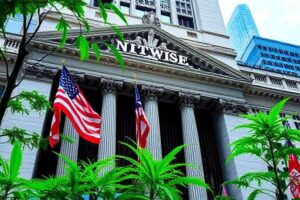
Charles Hoskinson, founder of Cardano, has never been shy about presenting ambitious ideas — from reshaping Ethiopia’s education system to launching a $200 million health clinic in Wyoming. Yet, while the rhetoric remains grand, Cardano’s actual progress continues to lag behind rivals like Ethereum and Solana.
Hoskinson’s Expanding Vision
At the Rare Evo conference in September 2025, Hoskinson spotlighted his healthcare initiative in Gillette, Wyoming, claiming the clinic already serves a third of the town’s population. He pitched it as a “patient-first” project, incorporating blockchain technology and promising future integration of AI and cryptographic tools.
Hoskinson also doubled down on his skepticism toward Ethereum, warning that its reliance on scaling solutions and corporate liquidity gatekeepers could limit its survival. He suggested Ethereum might not last beyond 15 years.
But while Hoskinson critiques competitors, Cardano itself struggles to live up to its own promises.
Ethiopia to Gillette: Projects That Fizzle Out
In 2021, Cardano announced a partnership with Ethiopia’s Ministry of Education, touted as a milestone adoption with blockchain IDs for millions of students and teachers. Yet by 2024, the project had been reframed as a “learning exercise” and shifted under Hyperledger Identus, rather than being a direct Cardano achievement.
The Wyoming clinic has also raised questions. While Hoskinson described it as a $200 million effort, local reports suggested development costs were closer to $18 million. Promises of crypto integration and AI features remain unproven.
Cardano’s Developer Struggles
Cardano launched in 2017 but only enabled general smart contracts in late 2021 with the Alonzo hard fork. Developers immediately faced concurrency issues that slowed adoption. Despite upgrades like the Vasil hard fork, Cardano remains behind peers.
As of September 2025, Cardano’s DeFi total value locked sits near $390 million, compared with Solana’s $12.5 billion and Ethereum’s $93 billion. Developer activity shows the same divide: around 720 monthly active developers on Cardano versus Ethereum’s 3,200.
Solana, meanwhile, processes millions of daily transactions at extremely low fees, supported by Firedancer scaling efforts. Cardano averages about 71,500 daily transactions, a decline from earlier in the year.
Governance Tensions
Cardano’s governance model, split among Input Output, the Cardano Foundation, and Emurgo, has long been a source of conflict. Budget disputes in 2025 highlighted how centralization concerns persist despite on-chain voting structures.
While Cardano has introduced new budgeting processes with community participation, turnout remains low. Much of ADA’s supply is undelegated, leaving effective decision-making concentrated in a small portion of the network.
Distractions Beyond Blockchain
Hoskinson’s ventures extend far beyond Cardano. He is an investor in Colossal Biosciences, a startup seeking to resurrect extinct species like the woolly mammoth and dodo — a project many scientists criticize as flashy but impractical.
These side pursuits fuel criticism that Hoskinson is more focused on big narratives than solving Cardano’s persistent adoption and scaling challenges.
The Reality Check
Hoskinson continues to pitch big, disruptive visions. But the data paints a different picture: Cardano trails competitors in adoption, developer momentum, and transaction activity. While Ethereum and Solana expand rapidly, Cardano’s slow progress and governance disputes leave it struggling to hold relevance.
The tension between Hoskinson’s ambitions and Cardano’s actual performance raises a pressing question — can Cardano catch up, or will its founder’s grand visions remain more spectacle than substance?







